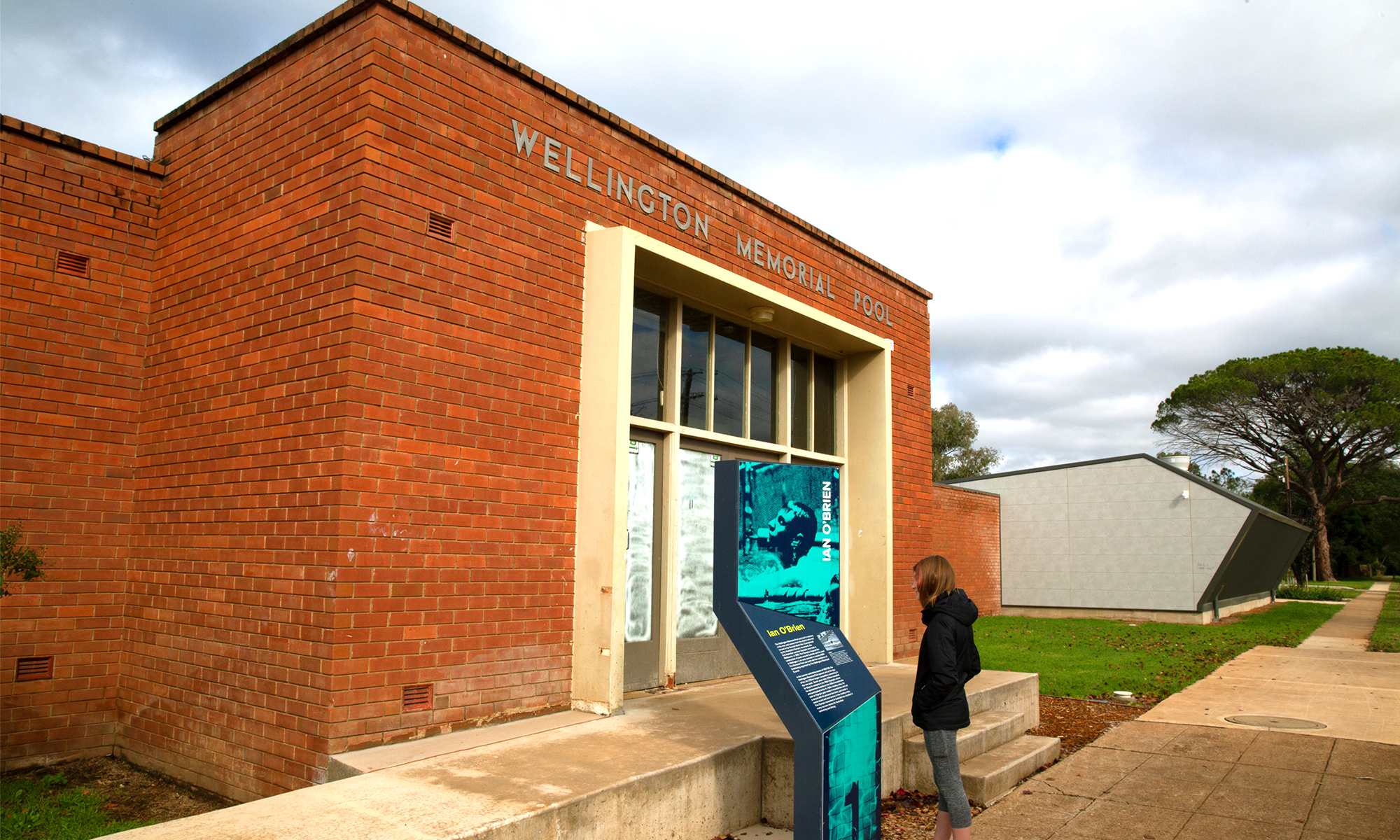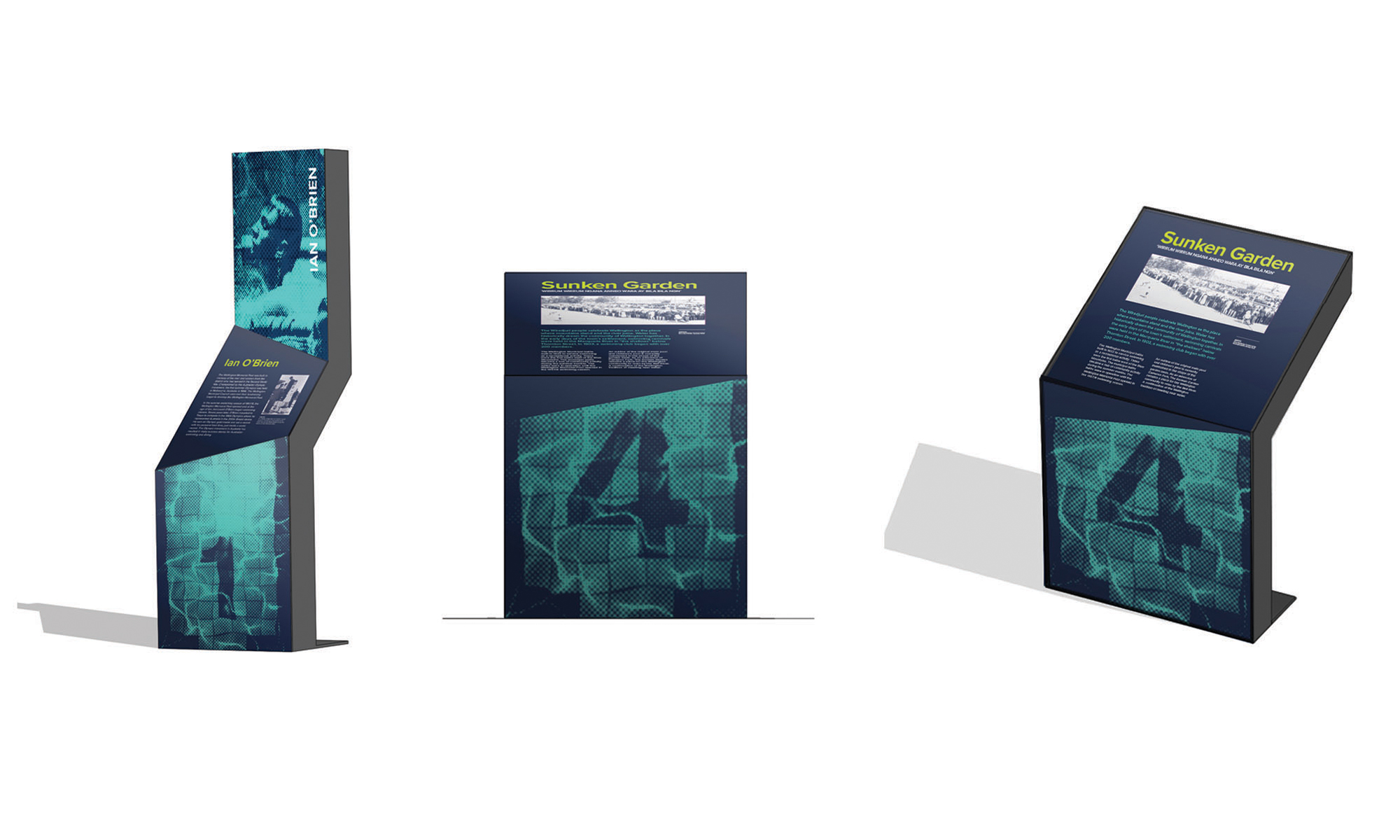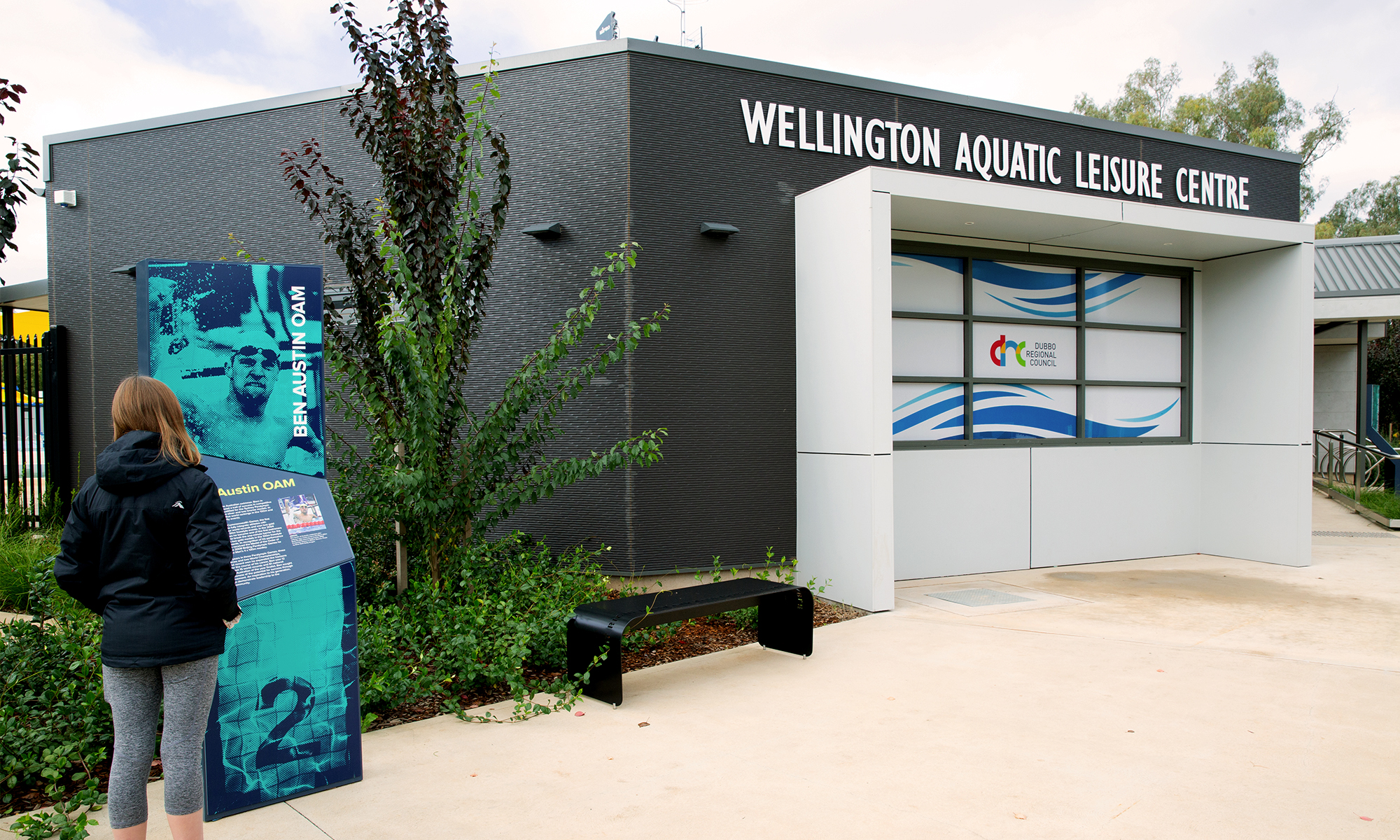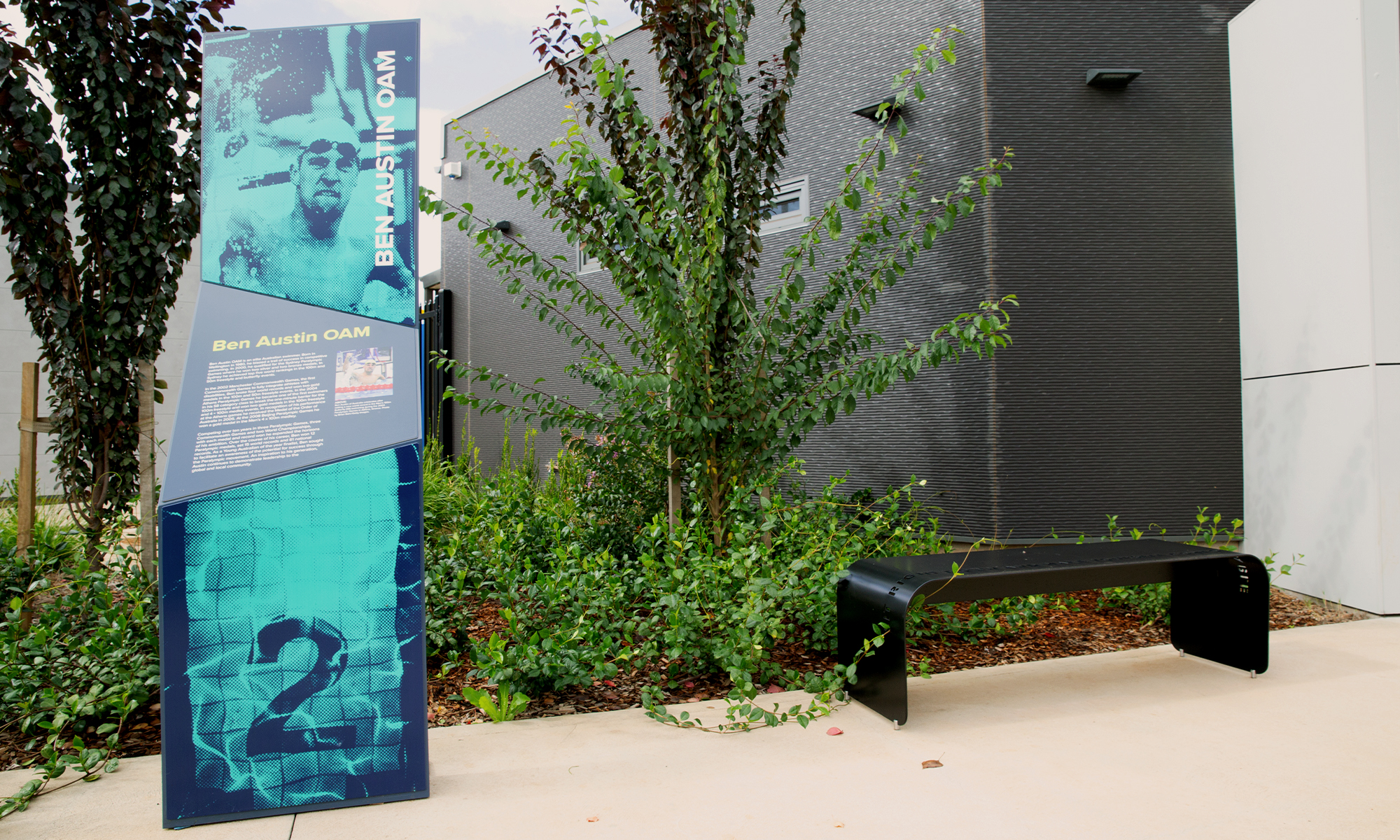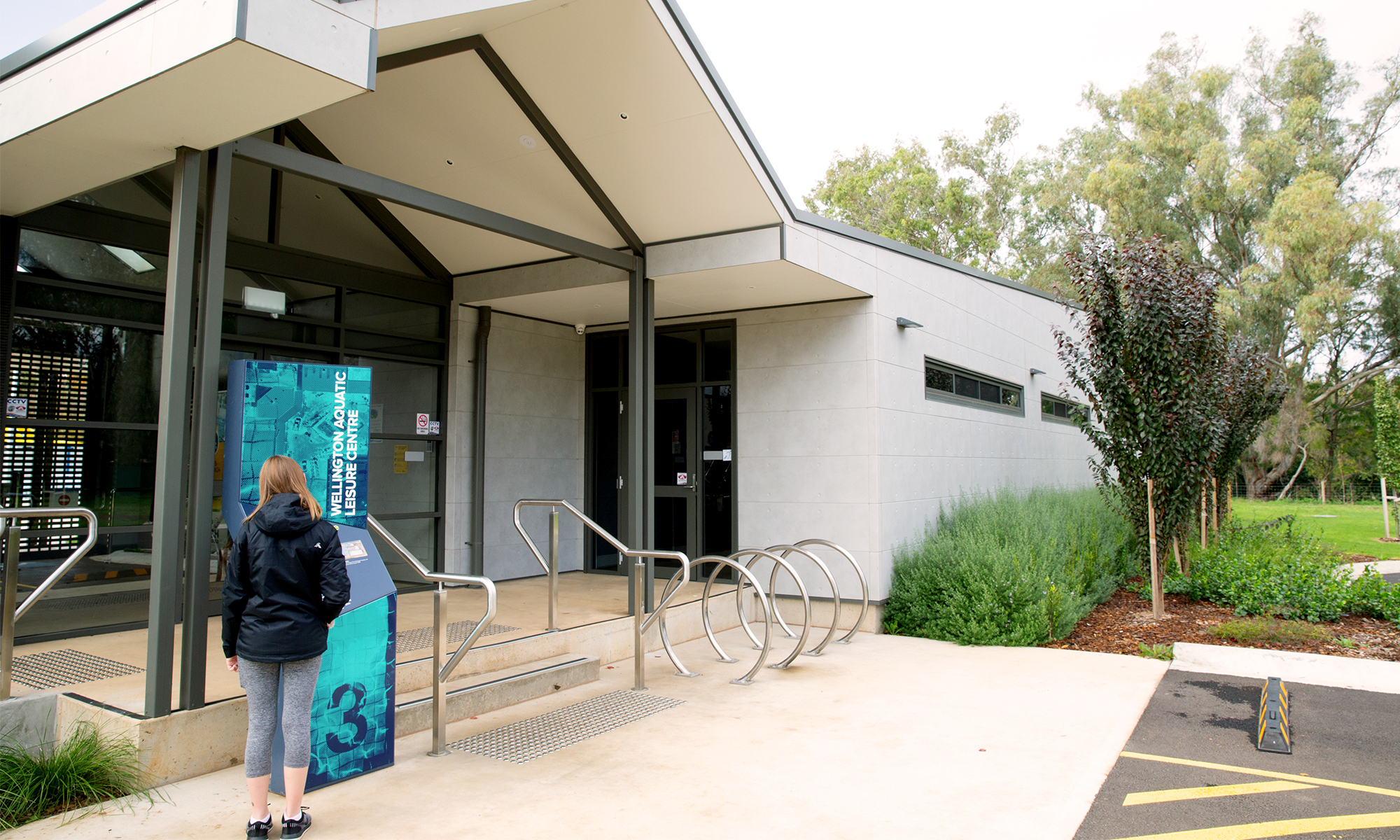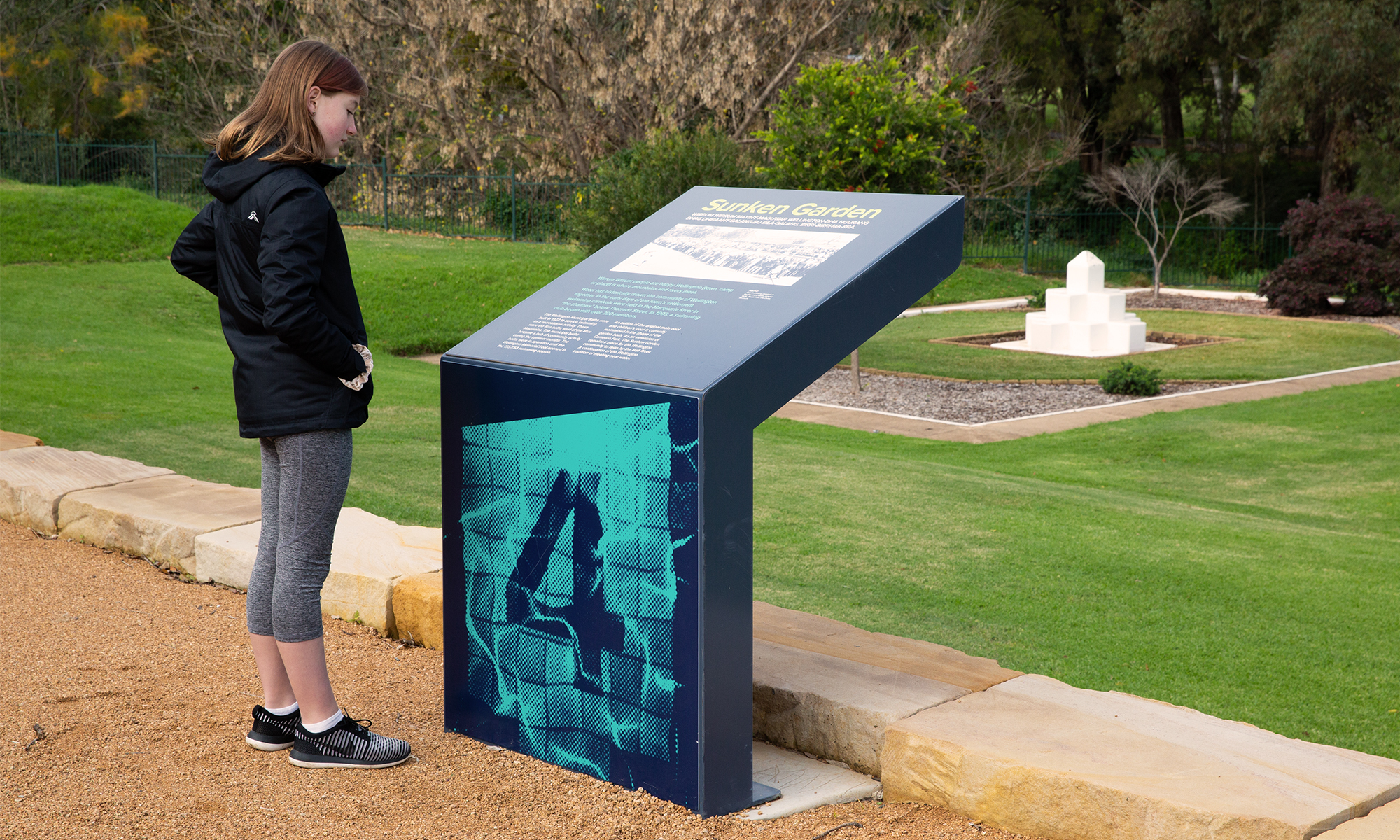Wellington Aquatic and Leisure Centre
PERMANENT INTERPRETIVE SIGNAGE AND MEDIA
Project Commenced: May 2019
Project Completed: October 2019
Thylacine’s role
- curatorial research, writing and image sourcing
- interpretive design
- graphic design
- print management
- media design and interviews
The project involved researching and interpreting public bathing in and close to the Bell River, Wellington NSW. The community moved from swimming in the Bell River to the development of three successive pools on the site over the period 1922 to 2019. The project included a written First Nations welcome to the site and description of the area by the Wiradjuri community.
Wirrum Wirrum mayiny maguwar Wellington-dha ngurang dhag dhiraany-galang-bu bila-galang, birri-birri-ma-rra.
Wirrum Wirrum people are happy Wellington (town, camp or place) is where mountains and rivers meet.
Water had historically drawn the community of Wellington together. In the early days of the town’s settlement, swimming carnivals were held in the Macquarie River in “the shallows” below Thornton Street. In 1903, a swimming club began with over 200 members.
The Wellington Municipal Baths were built in 1922 to service swimming as a recreational activity. These were the first baths west of the Blue Mountains. The municipal baths became a hub of community activity during the summer months.
The baths were in operation until the Wellington Memorial Pool opened in the 1957/58 swimming season; built in memory of the men and women from the district who had served in the Second World War. Championed by the Australian Olympic movement, the first Australian summer Olympics was held in Melbourne, in 1956. The Olympics inspired the construction of pools around Australia and the pool in Wellington is an early example in country NSW.
In 2019 the Wellington Memorial Pool underwent a redevelopment process reopening as the Wellington Aquatic and Leisure Centre. As part of the redevelopment of the heritage site we developed exterior signage and interior media that told the story of the site, the pools and the careers of Olympian Ian O’Brien and Paralympian Ben Austin who began their careers at the pools. The project also involved capturing the community excitement around the opening of the new pool and memories around the old pools through interviews and the production of two video clips.
Project partners included Dubbo Regional Council, Wiradjuri community, curator Cherie Prosser and Good Shout.

